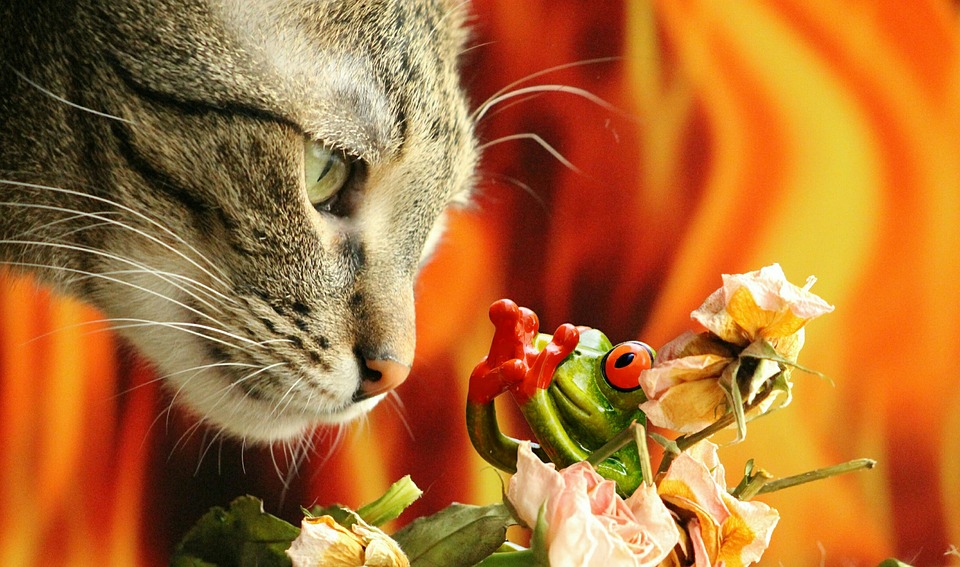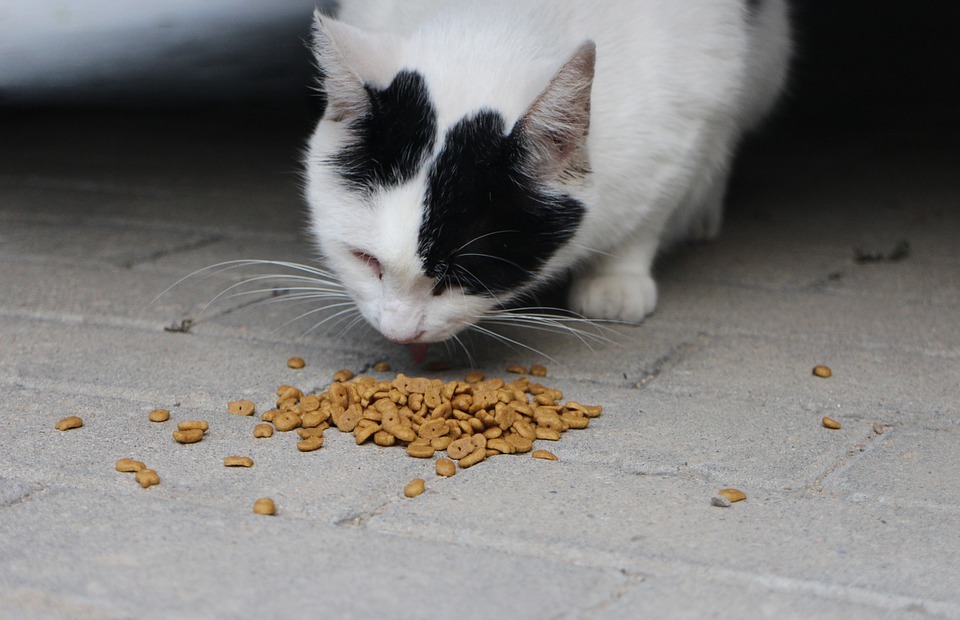This article delves into the captivating world of catnip, exploring the reasons behind its irresistible allure for felines. We'll embark on a scientific journey, examining the chemical reactions that trigger those playful and sometimes bizarre behaviours. From understanding the genetic basis for catnip sensitivity to delving into its potential therapeutic uses, this comprehensive guide will shed light on the fascinating relationship between cats and catnip.
Part 1: The Allure of Catnip: Unveiling the Secrets

1.1 Catnip: A Botanical Wonder
Catnip, scientifically known as Nepeta cataria, belongs to the mint family, Lamiaceae. It's a herbaceous perennial plant that thrives in temperate climates, featuring fragrant leaves and clusters of small, white flowers. But what truly sets catnip apart is its potent effect on felines, a phenomenon that has intrigued humans for centuries.
1.2 The Power of Nepetalactone
The intoxicating effect of catnip stems from its primary active ingredient, nepetalactone. This volatile oil, a terpene, is responsible for triggering the characteristic catnip "high". Nepetalactone acts as a pheromone mimic, interacting with the cat's olfactory system and influencing their behaviour.
1.3 Beyond Nepetalactone: The Role of Actinidine
While nepetalactone steals the spotlight, catnip also contains another important compound, actinidine. This alkaloid acts as a sedative, contributing to the overall catnip experience. While its effects are less pronounced than nepetalactone, actinidine plays a role in modulating the cat's reaction, potentially contributing to the calming effect some cats experience.
Part 2: The Sensory Symphony: Unlocking the Catnip Response

2.1 The Vomeronasal Organ: The Cat's Secret Sensory Pathway
The key to understanding the catnip response lies in a specialized sensory organ, the vomeronasal organ (VNO), also known as Jacobson's organ. Located in the roof of the cat's mouth, the VNO is responsible for detecting pheromones and other non-volatile scents.
2.2 The Catnip Dance: A Cascade of Responses
When a cat sniffs catnip, nepetalactone molecules bind to receptors in the VNO, triggering a cascade of responses. These include:
- Sensory Stimulation: The VNO sends signals to the brain, stimulating areas responsible for processing scent information.
- Hormonal Release: The brain releases various hormones, including dopamine, a neurotransmitter associated with pleasure and reward, which explains the euphoric effect of catnip.
- Behavioral Changes: The interplay of sensory stimulation and hormonal release results in the observable catnip-induced behaviours, such as rolling, rubbing, and playing.
2.3 The "High" Explained: A Neurochemical Symphony
The catnip "high" is essentially a temporary alteration in the cat's brain chemistry. The interaction between nepetalactone and the cat's olfactory system triggers a cascade of neurochemical events, leading to changes in mood, behaviour, and perception.
Part 3: The Genetics of Catnip Sensitivity: Why Some Cats Are Unaffected

3.1 A Tale of Two Genes: The Catnip Sensitivity Gene
Not all cats are equally susceptible to the intoxicating effects of catnip. The genetic basis for this difference lies in a single dominant gene on the X chromosome. Cats inheriting this gene from one or both parents will react to catnip, while those with two recessive copies will remain indifferent.
3.2 The X Chromosome: A Key Player in Catnip Sensitivity
The X chromosome plays a crucial role in determining a cat's response to catnip. Since male cats have only one X chromosome, they will always exhibit catnip sensitivity if they inherit the dominant gene. Female cats, with two X chromosomes, have a more complex genetic landscape, with the possibility of being homozygous (two dominant genes) or heterozygous (one dominant and one recessive gene).
3.3 The Mystery of Non-Reacting Felines
The 30% of cats that don't react to catnip hold a genetic secret. They carry two recessive copies of the catnip sensitivity gene. This genetic variation explains why some cats are completely unmoved by the alluring scent of catnip, while others revel in its effects.
Part 4: The Therapeutic Potential of Catnip: Exploring Its Benefits Beyond Play
4.1 Catnip: A Natural Stress Reliever for Feline Friends
Studies suggest that catnip might have calming effects on cats experiencing stress or anxiety, particularly in environments with high levels of noise or unfamiliar people. The release of dopamine and other neurotransmitters associated with relaxation might contribute to this calming effect.
4.2 Encouraging Exercise and Play: A Healthier Lifestyle
Catnip's ability to stimulate playfulness can be a boon for promoting physical activity in cats. Encouraging playful behaviour can help cats maintain their physical and mental health, preventing boredom and obesity.
4.3 Exploring Catnip's Role in Anxiety Management
While research is ongoing, some studies suggest that catnip might be a natural alternative to pharmaceutical medications for managing anxiety or stress in cats. It's crucial to consult with a veterinarian before using catnip for therapeutic purposes, as its effectiveness and safety can vary depending on individual cats.
Part 5: The History and Folklore of Catnip: A Journey Through Time
5.1 Ancient Origins: Catnip's Medicinal Roots
Catnip's history stretches back centuries. Ancient civilizations recognized its medicinal properties, using it to treat various ailments, from headaches and fevers to promoting relaxation and sleep. Catnip was also used as a pest repellent and a culinary herb.
5.2 Folk Medicine and Superstitions: The Mystical Allure of Catnip
Over time, catnip became intertwined with various folklore and superstitions. Its association with cats and its intoxicating effects fueled myths and legends surrounding its power and influence. People believed that catnip could ward off evil spirits, promote fertility, and even increase a person's attractiveness.
5.3 Catnip in Literature and Popular Culture: A Recurring Theme
Catnip's captivating allure has inspired countless works of art, literature, and popular culture. From children's stories to cartoons, the playful antics of cats under the influence of catnip have become a recurring theme, cementing its place in our collective imagination.
Part 6: How to Use Catnip Effectively: Tips for Feline Fun and Well-being
6.1 Choosing the Right Catnip: Quality Matters
When selecting catnip for your feline friend, opt for high-quality, organic varieties. Avoid products containing synthetic chemicals or pesticides, which can be harmful to your cat's health.
6.2 Different Forms of Catnip: Finding the Best Fit for Your Cat
Catnip is available in various forms, each with its own advantages and disadvantages:
- Dried Catnip: The most common form, dried catnip, can be purchased in bulk or in pre-packaged sachets. It provides a long-lasting effect but may need to be refreshed regularly.
- Fresh Catnip: Growing your own catnip allows you to offer your cat fresh leaves, but these tend to have a shorter lifespan and require more frequent replenishing.
- Catnip Toys: Many commercially available cat toys are infused with catnip, providing a combination of fun and stimulation.
- Catnip Spray: Catnip spray can be sprayed on toys or bedding to provide a temporary burst of catnip allure.
6.3 Using Catnip Responsibly: A Balanced Approach
While catnip is generally safe for cats, it's essential to use it responsibly:
- Moderation is Key: Excessive exposure to catnip can lead to desensitization, meaning the cat will no longer react to its effects.
- Individual Sensitivities: Some cats may experience adverse reactions, such as vomiting or diarrhoea, if given too much catnip.
- Supervision: It's crucial to supervise your cat when they are interacting with catnip, particularly young kittens or cats prone to hyperactivity.
Part 7: The Science Behind Catnip's Effects: A Deeper Dive
7.1 Nepetalactone: The Molecular Key to Catnip's Allure
The magic of catnip boils down to nepetalactone's interaction with specific olfactory receptors in the cat's nose. These receptors, known as G protein-coupled receptors (GPCRs), are responsible for detecting various scents and triggering a cascade of physiological responses.
7.2 The Vomeronasal Organ: A Sensory Gateway
The VNO is the gateway for nepetalactone to enter the cat's olfactory system. When a cat sniffs catnip, the volatile oil molecules travel to the VNO, where they bind to specific receptors.
7.3 Neurochemical Pathways: The Catnip "High" Explained
The binding of nepetalactone to receptors in the VNO sets off a chain reaction, triggering a series of neuronal signals that travel to the brain. These signals stimulate the release of various neurotransmitters, including dopamine, norepinephrine, and serotonin, contributing to the characteristic catnip "high".
Part 8: Catnip vs. Silver Vine: A Comparative Study
8.1 Similar Effects, Different Compounds
Silver vine (Actinidia polygama), another plant that cats find irresistible, shares some similarities with catnip but contains different active compounds. While catnip's primary active ingredient is nepetalactone, silver vine contains iridoids, including actinidine.
8.2 Silver Vine: A Potent and Long-Lasting Allure
Studies suggest that silver vine might be more potent than catnip and have a longer-lasting effect on cats. Additionally, some cats that are unresponsive to catnip may react strongly to silver vine.
8.3 Exploring the Potential Benefits of Silver Vine
Silver vine has gained attention as a potential therapeutic tool for cats, with some studies suggesting its ability to alleviate anxiety and stress. However, more research is needed to fully understand its therapeutic potential and optimal use.
Part 9: FAQs: Addressing Common Questions about Catnip
9.1 Is Catnip Safe for Cats?
Catnip is generally safe for cats when used in moderation. However, excessive exposure can lead to desensitization, and some cats may experience adverse reactions, such as vomiting or diarrhoea. Consult your veterinarian if you have any concerns.
9.2 Why Don't Some Cats React to Catnip?
Catnip sensitivity is determined by genetics. Cats inheriting a specific gene from both parents will not react to catnip. Roughly 30% of cats are genetically predisposed to being unresponsive to catnip.
9.3 Can Cats Become Addicted to Catnip?
Catnip does not cause addiction in cats. While they may develop a preference for its effects, they don't experience the same physiological dependence associated with addictive substances.
9.4 How Long Does the Catnip "High" Last?
The duration of the catnip effect varies depending on the cat's individual sensitivity and the amount of catnip they encounter. Generally, the effect lasts for 5-15 minutes, after which the cat will be immune to the effects for about an hour.
9.5 Can I Use Catnip on Kittens?
While catnip is generally safe for kittens, it's best to introduce it cautiously and in small amounts. Kittens under six months old may not react to catnip yet, and some may be sensitive to its effects.
9.6 How Often Should I Give My Cat Catnip?
For optimal enjoyment, limit catnip exposure to a few times per week. Overuse can lead to desensitization, reducing the effectiveness of catnip.
9.7 Can I Grow My Own Catnip?
Yes, you can easily grow your own catnip from seeds or seedlings. It's a relatively easy plant to cultivate, thriving in sunny locations with well-drained soil.
Everyone is watching
-

Are Cat Ribs Flexible? Understanding Their Anatomy
CATS & KITTENSThis article delves into the fascinating world of feline anatomy, exploring the flexibility of cat ribs and ho...
-

Can Cats Eat Bananas? (Everything You Need to Know)
CATS & KITTENSThis article dives into the intriguing question of whether cats can safely enjoy the sweet, yellow fruit, bana...
-

Cat Lifespan: How Long Do Cats Live?
CATS & KITTENSThis comprehensive guide explores the factors influencing the lifespan of our feline companions, providing ins...
-

Can Cats Get COVID-19? What You Need to Know
CATS & KITTENSThis article will delve into the fascinating world of feline COVID-19 susceptibility. We'll explore whether ca...
-

Can Cats Eat Eggs? A Complete Guide to Egg Safety for Your Feline Friend
CATS & KITTENSWhen it comes to treating our furry companions, we all want to ensure we're doing what's best for them. Eggs...
